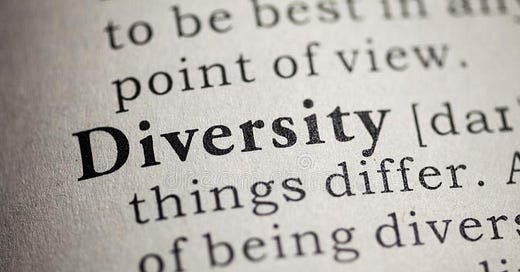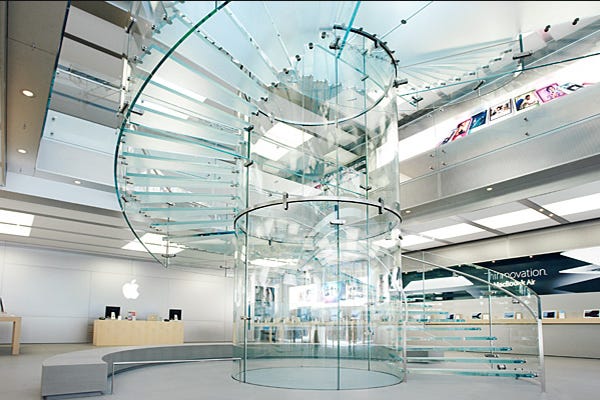When is Diversity Irrelevant?
Acknowledging Uncertainties, Doubts, and Complexities in the Push for Diversity
Consider an incomplete list of groups.
A surgical team removing a childhood cancerous tumor.
A professional basketball team.
A crisis negotiation team responding to armed burglars with hostages.
Scientists seeking to understand and prevent suicide.
A cabin crew on a commercial airline.
A comedy troupe.
Contemplating real-world groups where performance is of utmost importance (for surgeons and hostage negotiators, it’s literally life and death), questions arise about how to create the best teams.
It helps to reflect on the primary mission of the groups above.
The surgical team aims for health and survival.
The professional sports team wants wins and money.
The crisis negotiation team reduces casualties to near-zero.
The scientists seek to improve mental health.
The airline crew wants passengers to be safe and enjoy the flight.
The comedy troupe’s currency is audience laughter.
Today’s leaders profess that better groups arise from diversity. As society wrestles with the importance of diversity, we should acknowledge that there are no simple answers about whether and how diversity is a strength.
……………………………………………………………
When leaders talk about diversity initiatives, you hear mantras such as diversity is “the source of our strength” and the “greatest asset.” Proponents of diversity seek to rectify a sordid history of bias, prejudice, and discrimination. While we should support diversity initiatives, this does not mean agreement with the specific tactics and strategies. In pursuit of immediate change, insufficient attention has been given to decision-making complexity and tradeoffs.
An initial source of confusion is what falls under the umbrella term of diversity.1 For example, in university settings, the discussion centers on the race and sex of students and faculty, followed by gender, sexual orientation, geographical location, and age.
Very little attention is given to other individual differences such as the mosaic of unique historical events that makes a person inimitable. Their genetic inheritance (which includes neurodiversity and temperament), experience with caregivers, teachers and mentors who guided them, cultural information digested (through mediums such as travel, traditions, books, and social interactions), along with personality strengths and weaknesses (such as sensory processing sensitivity, curiosity, and perseverance), talents, skills, and activities they’ve partaken in. There has never been anyone like you before and there never will be. Every human possesses a jagged profile that extends far beyond visible demographic characteristics.
…………………………………………………………
Designing teams and groups is messy. To deal with messy situations, build flexibility into the system. Someone has to ask how this will work. Someone has to ask whether and why race, sex, gender, age, being able-bodied, or any particular individual difference matters. We have to be transparent:
Sometimes demographic variables matter, sometimes they don’t. Sometimes demographic diversity makes groups better, sometimes it makes groups worse, and sometimes this consideration is inert or irrelevant.
If I am in the restaurant industry, I need warm bodies with clean driving records who can drive a truck, or work in a chicken plant, manufacturing plant, warehouse, or restaurant kitchen. As for the chef, they must be able to deliver consistent, high quality meals to paying customers. Anything else is just a bonus.
As a counter example, after generations of all-male architectural firms, when women joined their ranks, designs improved. Popular structures were re-examined from an alternative perspective. Women asked how glass spiral staircases are desirable to women wearing a dress. As men on lower levels simply turn their head upwards and they are staring right at people’s underwear. A thought that never occurred to the purely aesthetic minded men.
By addressing situational sensitivities, uncertainties, and dilemmas, a social movement gains more traction. The movement can work with skeptics and detractors - seeking to change people’s minds instead of mandating acceptance. Let’s directly deal with how diversity operates in a nonlinear world, that often rests on shaky empirical ground until new, better data are collected.
Thinking of the groups you are a member of, or desire to be part of, consider a few questions.
With a limited number of slots in a large number of groups, which individual difference variables are most important to consider?
How do we weigh differences in strengths, talents, and prior experiences and accomplishments when leaning toward demographic diversity?
What are the benefits and costs of telling people that their race, sex, or some other visible feature is the most important and interesting feature about them? Especially youth.
When do unique perspectives, knowledge, and skills override demographic diversity?
Unrealistic expectations set groups up for failure. Avoiding discussion about doubts, dilemmas, and tradeoffs ensures a superficial approach to diversity. The more you care about diversity, the more invested you should be in acknowledging and working with the uncertainty instead of hiding from it. Treat people with sufficient intelligence that they notice simple formulas will not suffice in human affairs such as the selection process of choosing members from a large pool of applicants.
The evidence on the value of demographic diversity to group performance is mixed at best. A body of evidence that runs counter to the narrative told by many colleges and universities, organizations, and societal leaders who understandably, want the science to be clear-cut.
Diversity might be a conditional good. Sometimes a select number of individual differences are important. No matter how much we want our favorite singular variable to matter, sometimes it doesn’t. Pretending that it does matter (when it doesn’t) creates unnecessary skepticism and strains the functioning of groups.
Diversity cannot be reduced to a formula. Any formula pushes for uniformity instead of possibility. Which has never been the marketed objective, or desirable end game, of diversity initiatives. We must carefully assess the parameters of what a group is designed for, and what will help or hinder the group’s functioning. We must also remain flexible to how individual members that deviate from conventional thinking offer protection against conformity mistakes and serve as a catalyst of a group’s evolution.
Dr. Todd B. Kashdan is the author of The Art of Insubordination: How to Dissent and Defy Effectively (Avery/Penguin) and a Professor of Psychology who leads The Well-Being Laboratory at George Mason University.
Take the PRINCIPLED REBEL quiz.
Follow me on socials: Twitter or Facebook or Linkedin or Instagram
Merriam-Webster’s definition of diversity is “the condition of having or being composed of differing elements.” The next line suggests a constraint, “especially : the inclusion of people of different races, cultures, etc. in a group or organization.” No mention is given of why that particular element is the only emphasis. Why not, for example, intelligence, diligence, divergent thinking, or socioeconomic status?





